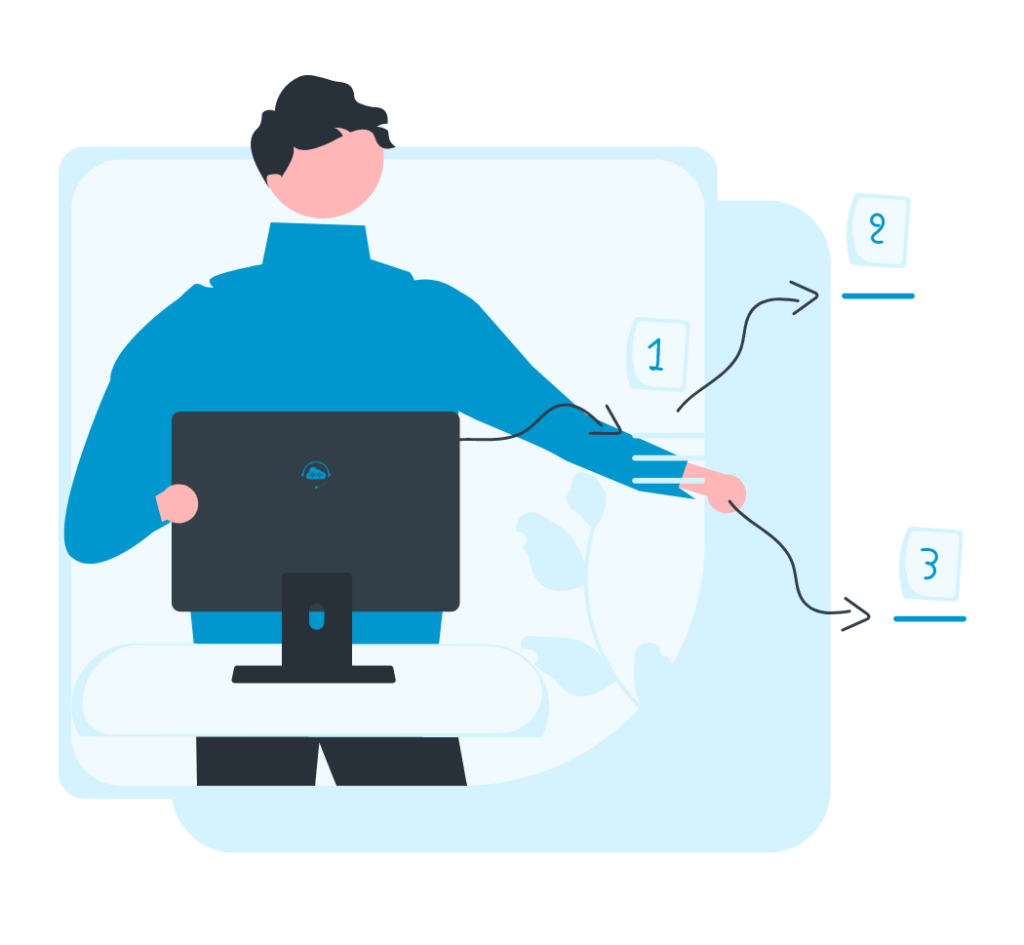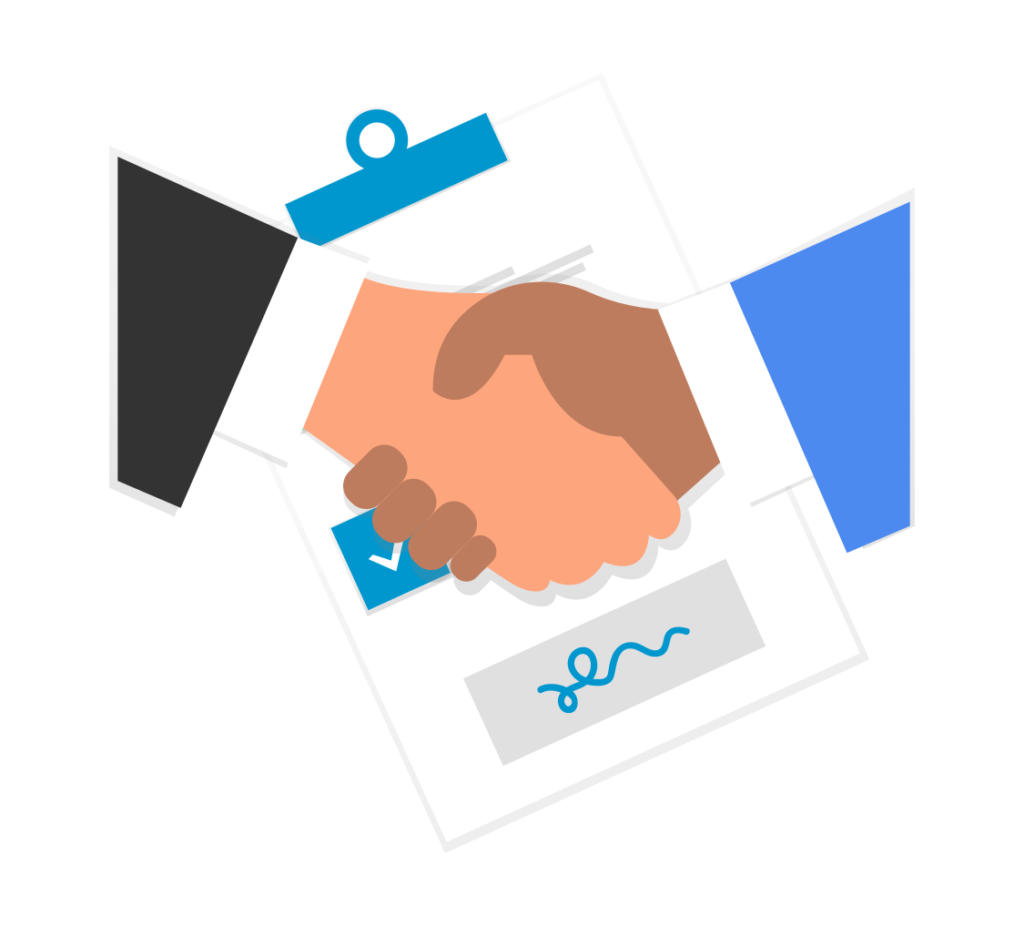The emergence of chat as a customer service channel
Back in the 1990s, contact centres were called call centres, because they only handled calls. IP telephony was in its infancy. The power of today’s digital world had yet to be released.
It wasn’t until the internet started gaining popularity, and smartphones put the internet in people’s pockets, that businesses started using chat to talk to their customers.

Many large organizations offer chat as a communication option. While most customers prefer talking to an agent, the share of customers using chat has been steadily increasing.
Chat itself is becoming more complicated. It can include live chat, where customers interact with a human agent, and chatbots, where customers interact with automated systems. They can communicate with customers to a limited degree and handle simple pre-set tasks.
Automated and manual chat operations can be executed through OMNINGAGE’s chat for Amazon Connect module.
It’s worth examining the business case for chat, both from a customer’s perspective and from the perspective of the contact centre manager and her paymaster, the Chief Financial Officer (CFO).
Why customers like live chat
They are used to it: If your customer demographic is the younger generation, they are used to chat. They use WhatsApp or Messenger to chat with their friends and family already.
A 2011 Forrester study reported that Customer Satisfaction (CSAT) scores for chat were up to 10% higher than for voice.
Sam Suthar, the CMO of Aquire, reported CSAT figures of 73% for chat, 61% for e-mail and 44% for voice.
Speed (Or perceived speed) / Multitasking: Many customers prefer chat because when they start a chat, they feel that they get a faster response time.

When customers are on a call and held in a queue, they have to wait for an available agent. Customers do not appreciate waiting when every second on the phone costs them money.
With chat, customers are most likely in front of a screen. They can do something else while waiting, so the perception of waiting and being held helpless is reduced.
Cheaper than calling: Most mobile calling and data plans have voice calls as the most expensive option. This price point, as well as the wait times customers experience for calls, makes chat interactions a more attractive option.
Discretion: Customers can access a chat in complete silence. That means they do not need to be overheard, nor do they need to disturb others. An important consideration when the customer is in a public area.
Allows for sharing documents and text: Unlike calls, chat interactions enable agents to send documents to customers during the chat session. The agent can also send customers a link to a useful website and guide them through using it to complete the task.
If handled tactfully, this leaves customers feeling more empowered. They feel they have been helped to do something themselves.
Easier to keep for future reference: Customers have a heightened awareness of privacy and data protection as a result of the introduction of the General Data Protection Regulations (GDPR).
They can copy or download a chat conversation for future reference without having to request it. This transparency helps them feel more confident in the company as a brand.
Preferred method of communication in SE Asia: Asian contact centres with Chinese speaking customers report that text-based communications, such as chat and e-mail, are more popular than voice.
This is partly due to cost, but also because the Chinese language has many spoken dialects that are not mutually intelligible. The written language, based on pictograms rather than sounds, is universally intelligible to all users of the Chinese language.
Why contact centre managers and your CFO will like chat
Concurrency: The biggest and best news is that one agent can handle multiple chats at the same time. Since 65% or more of a contact centre’s costs are agent employment costs, this makes a chat interaction significantly less expensive than a call.
Al Rose, from the outsourcer TELUS, recommends that agents should ideally handle 1.8 to 2.5 concurrent manual chat sessions for optimum performance in terms of cost versus agent stress versus CSAT.
Multilingual agents: In Europe and the Middle East, it’s not unusual to have multilingual agents handling interactions in their native language and in one or more other languages.
Chat is an easier medium for someone to communicate in a second language.
Applications such as OMNINGAGE’s chat for Amazon Connect module include templated phrases which can be written by a native speaker and used by the non-native speaking agents to communicate with customers.

Where customers use phrases which an agent does not understand, agents can copy and paste them into a translation tool and confirm what the customer has written.
Compatibility with messaging tools: Chat applications can be connected to services such as WhatsApp or Messenger as well as the company website. This gives customers more opportunities to make contact.
Compatibility with automated systems: Chat is a text-based medium. It is more compatible with chat bots or automated response systems than voice. Chat bots can handle simple interactions without human intervention, so further reducing the costs of handling customer interactions.
Automated response systems can handle some parts of conversations using phrase activated templates. This can free up humans to handle situations where the customer needs the human touch.
Ease of analysis: The text-based nature of chat makes it much easier for automated systems to analyse. Any speech analytics user will tell you that the “heavy lifting” is done by the component that converts recorded sounds into text.
Chat eliminates this burden because the medium is text already.
This makes it easier for systems to search for key phrases, conduct sentiment analysis based on emotionally laden words and indicate script, process adherence or compliance issues in near real time.
About OMNINGAGE:
OMNINGAGE develops software solutions for Amazon Connect (Cloud Contact Centre).
We offer a most modern and data-driven cloud-based Agent Desktop for Amazon Connect. The platform is called OMNINGAGE Connect. It is also available on Amazon Marketplace.
https://aws.amazon.com/marketplace/pp/B08CHNNJCT
What sets our products apart from the rest is our focus on “agent/user experience” which helps businesses to promote agent engagement, reduce agent fatigue and boost productivity and customer experience. The other key business outcomes are:
• Average Handle Time Reduction
• Increased First Call Resolution (FCR)
• Higher Customer Satisfaction
• Reduction in Agent Attrition
The platform is available globally on AWS and integrates with a variety of CRM and back-end applications to offer a single-window operation to users.
Share this blog on Social Media:








